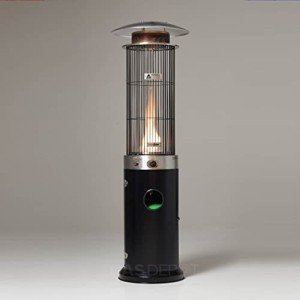Lowering the Price of Patio Gas

Patio gas is a liquefied petroleum (LPG) that is used in patio heaters and BBQs. small gas patio heater is available in small "patio bottles" that are designed to work with regulators, making it easy to connect them to your barbecue.
It is highly efficient in warm temperatures and has a low melting point.
Cost of Gas
Patio gas is a form of propane or butane used for outdoor heating and barbecues. It is typically delivered in the form of a large propane or butane bottle with a clip-on regulator. This kind of gas is less than natural gas that is delivered through pipes. However the cost of installing or replacing gas lines will be based on the type and material of pipe.
Propane is also sold in smaller cylinders that are compatible with BBQ and patio heaters. These cylinders are filled by propane dealers in the majority of cases. They are either an adjustable screw-on or clip-on regulator with a diameter of 27mm.
Cost of Bottles
If you want to reduce the price of gas for your patio, there are a few ways you can go about it. For one, be sure to buy your bottles in the early morning or late in the evening, when prices are generally lower. Make sure to fill your tank with gas when it is cool outside. Temperatures that are hot cause the fuel to expand, and you'll pay more for fuel that is less.
You can also save money by using recyclable bottles instead of plastic ones. Some of the most popular choices are Glaceau Smartwater, which is known for its feathery weight and easy-to-drink flip cap, and the Black Diamond Ultralight, which is adored by thru-hikers due to its narrow shape and lightweight, quick-to-refill style.
The 13kg Calor Patio (propane) gas cylinder is perfect for outdoor heaters and BBQs that have 4 burners or more. The cost includes the cylinder and valve. If you are purchasing your first cylinder, without a bottle to return you, add EUR20.
Cost of Regulators
There are many gas regulators available for use in patios. However, they're not all the same. You'll need a regulator compatible with the kind of cylinder you're using. A propane cylinder, for instance has an entirely different valve than a butane. Both types of gas require different pressures to be released, so they can't be used interchangeably without changing the regulator.
There are various types of regulators as well such as clip-on and screw-on. Some have the pressure setting, restrictor and a sensor all in the same body, while others are more intricate and can include a variety of separate components. The type of cylinder you're using will affect the cost of the regulator. The smallest bottles come in various sizes, but larger cylinders will cost more and require a bigger regulator. If your patio heater requires natural gas, the cost of the installation of a new gas line will increase the overall installation price. You'll also have to take into account the cost of a general contractor for the project, as well as any permit or inspection fees required by your local authority.
Cost of Installation
The cost of installing gas for your patio is contingent on the kind of system you have and the amount of piping required. For instance, the installation of the gas line from the main line to the home typically costs around $20 per linear foot. This price includes the cost of laying pipes and connect appliances to the line. This price covers the cost of materials like copper or steel pipes, which are more expensive than those made of plastic. You should expect to spend an additional $50 for a gas leak inspection.
You can buy propane or butane gas in a small "patio bottle" that's designed with BBQs and patio heaters in the back of your mind. The design is compatible with the gas regulators that connect to a patio heater or BBQ's cylinder. Propane is orange-colored and Butane is blue, but both are equally suitable for outdoor use. Calor sells propane butane, propane, and patio gas LPG cylinders in different sizes. However, the bottles are not interchangeable - each has its own unique gas regulator.
The gas regulator controls the pressure at the point that gas is released from the cylinder. This is important as it stops gas from accumulating to dangerous levels, which could lead to an explosion. Gas regulators come in many sizes and styles. They include clip-on and screws-on versions. You'll need an additional regulator for your patio heater or BBQ because the cylinders use different amounts of gas, and the pressure at the point they release gas is different.
Gas regulators are an integral part of any gas appliance. They let you control the flow of gas and ensure that the system is secure. Most regulators have a screw-on connector that is easy to connect to the cylinder. The majority of hardware stores sell regulators. You can rent a gas regulator from most rental companies.
The cost of installing gas lines is dependent on a variety of factors, including the length and location of the pipe, the price of the materials and the complexity of the installation. Installing a new gas line for a grill will cost between $20 and $25 per linear foot. The cost could increase if you're installing a pergola or gazebo that requires anchor bolts to hold it in place. This project's price will also increase due to the cost of trenching and excavation.
